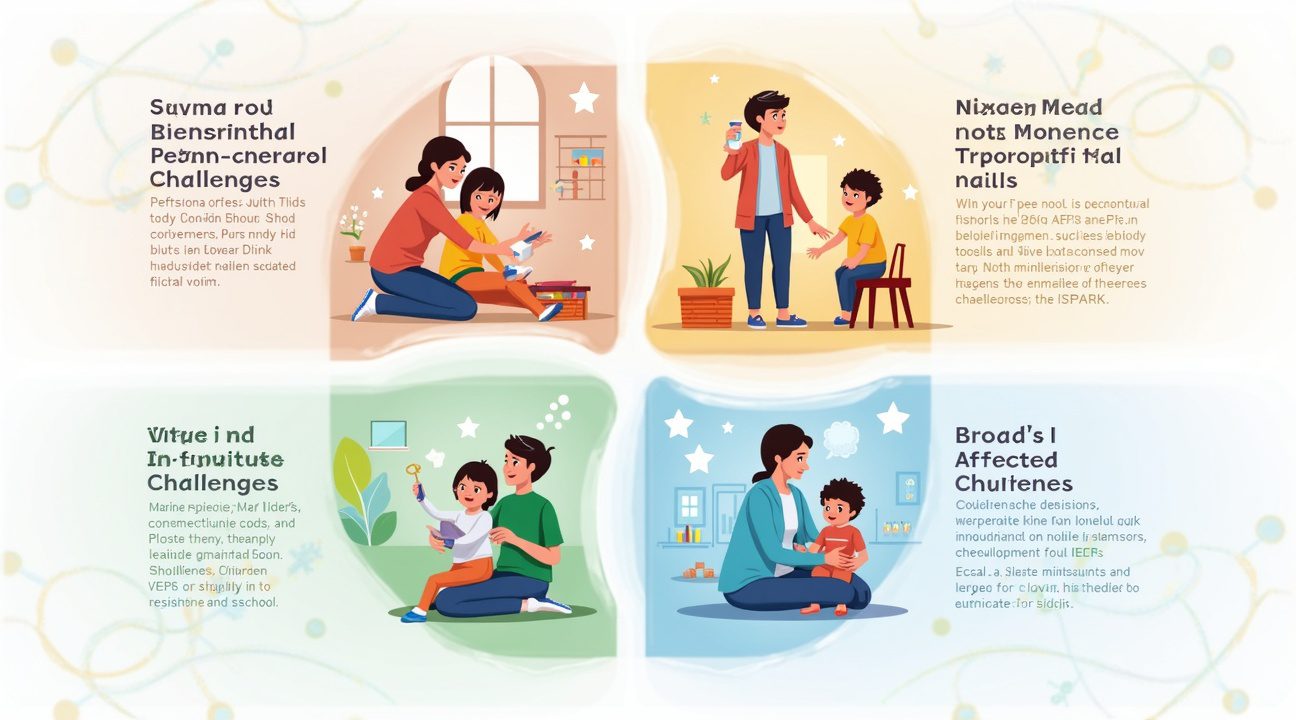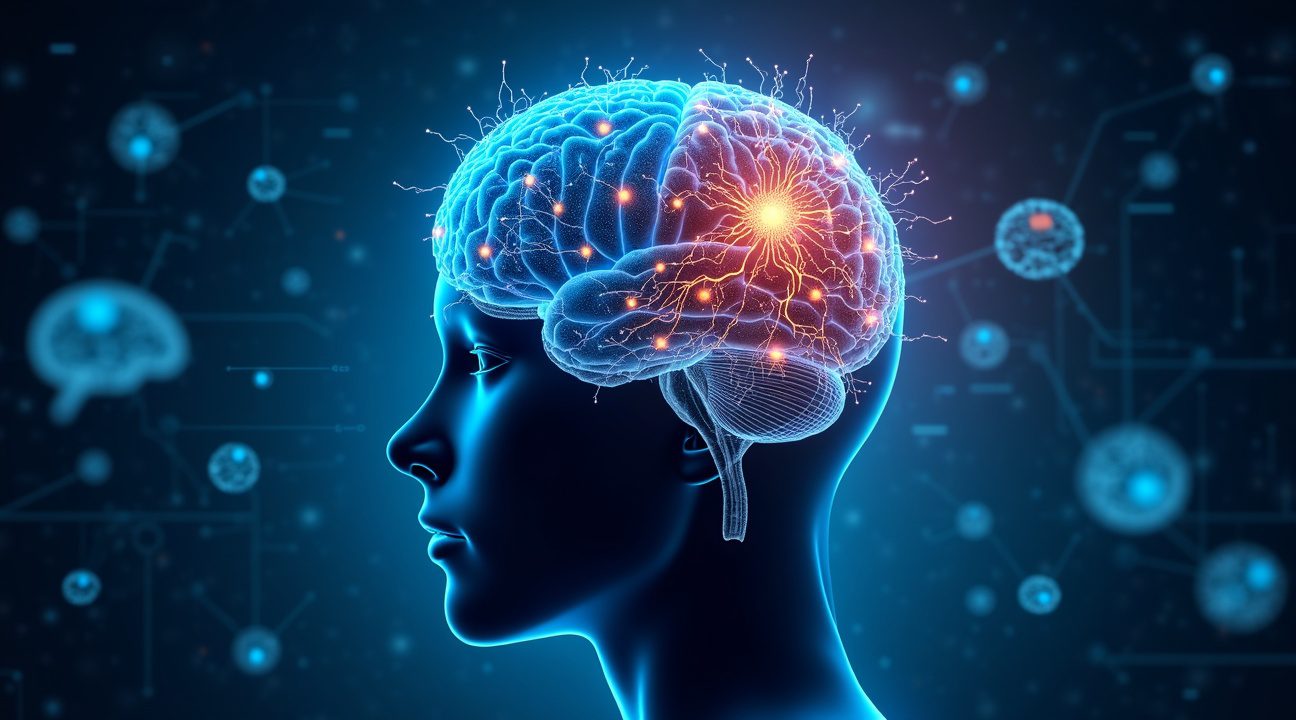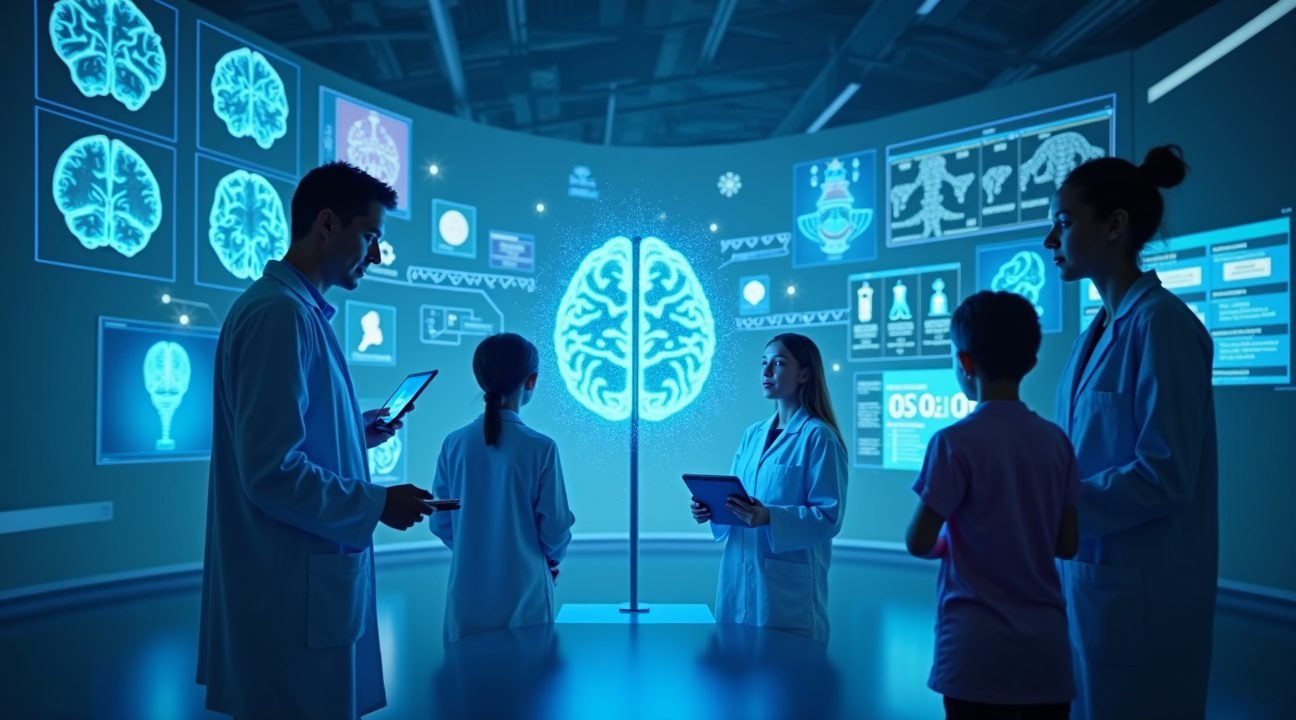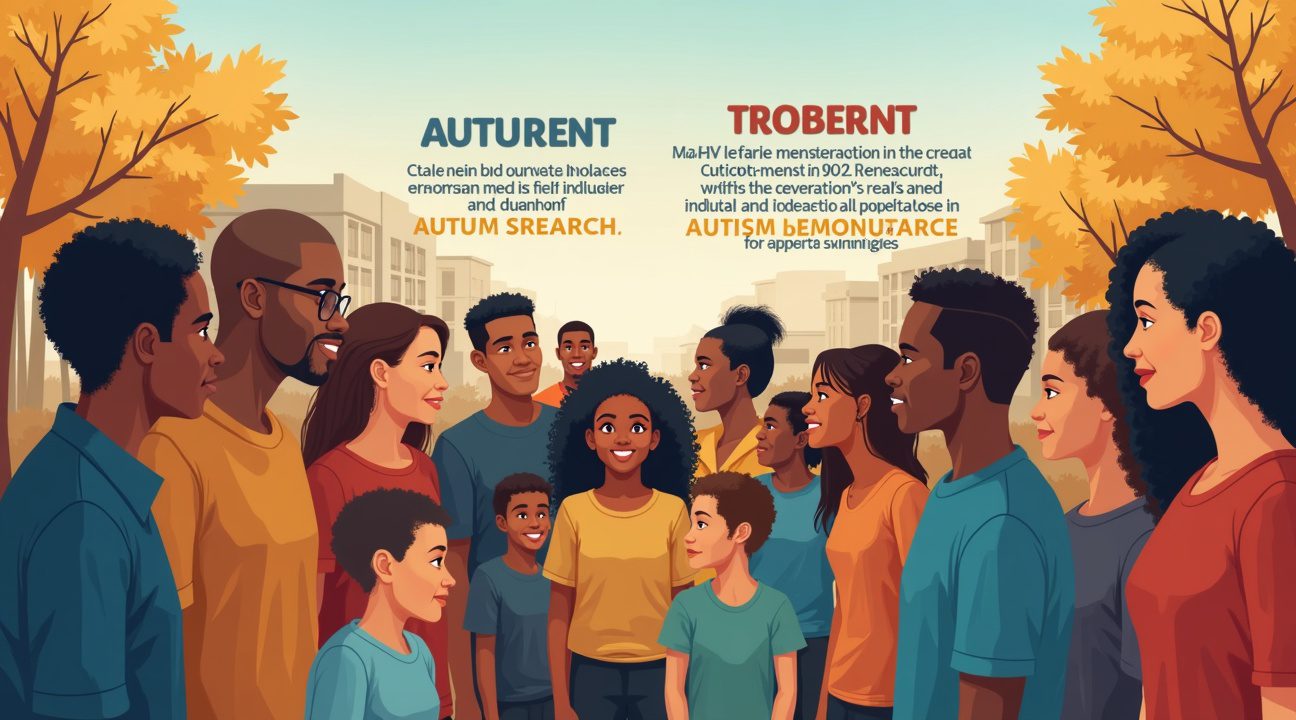Researchers have uncovered groundbreaking evidence that autism isn’t a single condition. A comprehensive study examining more than 5,000 children reveals four distinct autism subtypes, each possessing unique genetic markers, developmental trajectories, and clinical characteristics. This discovery fundamentally challenges how medical professionals understand and approach autism diagnosis and treatment.
The findings suggest that what clinicians currently label as “autism” actually encompasses multiple separate conditions. Each subtype demands different diagnostic methods and individualized treatment strategies. This paradigm shift could revolutionize how healthcare providers assess and support individuals on the autism spectrum.
Key Takeaways
- Four distinct autism subtypes identified: Social and Behavioral Challenges (37%), Moderate Challenges (34%), Mixed ASD with Developmental Delay (19%), and Broadly Affected (10%), each requiring different intervention approaches
- Genetic differences validate biological diversity: Each subtype shows unique genetic mutation patterns, with some driven by spontaneous genetic changes and others by inherited variants, supporting the multiple conditions hypothesis
- Two separate diagnostic pathways emerge: Early diagnosis (before age 6) links to communication difficulties and follows one genetic pathway, while later diagnosis connects to emotional/behavioral challenges and follows a completely different genetic path
- Mental health risks compound with multiple conditions: Children with combinations of neurodevelopmental conditions face dramatically increased risks for depression and anxiety, requiring integrated rather than isolated treatment approaches
- Precision medicine potential: The framework enables personalized treatment plans based on specific autism subtypes rather than one-size-fits-all interventions, though more diverse research populations are needed to validate findings across all communities
The Four Autism Subtypes Revealed
Scientists identified four distinct groups through advanced statistical analysis and genetic testing. Each subtype presents different challenges and strengths.
Social and Behavioral Challenges (37% of cases)
Children in this largest group primarily struggle with social interactions and repetitive behaviors. They typically develop language skills at expected rates but face difficulties with peer relationships and social communication. Genetic analysis reveals this subtype often stems from inherited variants rather than spontaneous mutations.
These children frequently excel in structured environments but struggle with social nuance and flexibility. Interventions focusing on social skills training and behavioral supports tend to produce the most significant improvements.
Moderate Challenges (34% of cases)
This subtype encompasses children with balanced difficulties across multiple areas. They experience moderate challenges in communication, social interaction, and behavioral regulation. The genetic profile shows a mix of inherited and spontaneous genetic changes.
Children in this group often respond well to comprehensive intervention programs that address multiple developmental areas simultaneously. Their more balanced presentation allows for diverse therapeutic approaches.
Mixed ASD with Developmental Delay (19% of cases)
These children face autism characteristics combined with significant developmental delays. Language development occurs more slowly, and cognitive challenges extend beyond typical autism presentations. Genetic testing reveals distinct patterns that differentiate this group from other subtypes.
Early intensive intervention proves crucial for this subtype. Educational approaches must address both autism-specific needs and broader developmental delays.
Broadly Affected (10% of cases)
The smallest but most complex subtype involves children with severe challenges across all developmental areas. They typically require intensive support throughout their lives. Genetic analysis shows the most significant burden of rare genetic variants.
This subtype demands comprehensive, lifelong support systems. Interventions focus on maximizing quality of life and developing functional communication skills.
Genetic Signatures Validate Biological Differences
Each autism subtype displays unique genetic fingerprints that support the multiple conditions theory. Some subtypes show higher rates of spontaneous genetic mutations, while others predominantly feature inherited genetic variants.
The genetic differences extend beyond simple variations. Each subtype exhibits distinct patterns of brain development and neural connectivity. These biological differences explain why children with different autism subtypes respond differently to identical interventions.
Researchers found that genetic testing could help predict which subtype a child represents. This predictive capability opens doors for earlier, more targeted interventions.
Two Diagnostic Pathways Discovered
The study revealed two completely separate pathways leading to autism diagnosis. Each pathway involves different symptoms, timing, and genetic factors.
Early Diagnosis Pathway (Before Age 6)
Children diagnosed early typically present with clear communication delays and repetitive behaviors. Their genetic profiles show specific patterns of mutations affecting brain development during early pregnancy.
Parents often notice signs before age two. These children benefit from immediate speech therapy and behavioral interventions. Early identification allows families to access crucial early intervention services.
Later Diagnosis Pathway (After Age 6)
Children diagnosed later primarily struggle with emotional regulation and behavioral challenges. Their genetic profiles differ significantly from early-diagnosed children, suggesting separate biological mechanisms.
These children often develop age-appropriate language skills initially. Social and emotional difficulties become apparent as academic and social demands increase. Different intervention strategies prove more effective for this group.
Mental Health Complications Multiply Risks
Children with multiple neurodevelopmental conditions face compounded mental health risks. The study found dramatically higher rates of depression and anxiety among children with co-occurring conditions.
Traditional treatment approaches address each condition separately. However, the research suggests integrated treatment plans produce better outcomes. Healthcare providers must consider how different neurodevelopmental conditions interact and influence each other.
Children with autism subtypes involving broader developmental challenges show the highest mental health risks. Early identification and prevention strategies become critical for these vulnerable populations.
Precision Medicine Applications
The subtype framework enables personalized treatment approaches based on specific genetic and clinical profiles. Instead of applying identical interventions to all children with autism, clinicians can select treatments most likely to benefit each individual subtype.
Pharmaceutical companies can develop targeted medications for specific subtypes. This approach could lead to more effective treatments with fewer side effects.
Educational systems can design specialized programs addressing the unique needs of each subtype. Teachers can implement teaching strategies most effective for their students’ specific autism presentations.
Research Limitations and Future Directions
The study primarily included children from specific demographic groups. Researchers acknowledge the need for more diverse populations to validate findings across all communities.
Future research must examine how environmental factors interact with genetic subtypes. Understanding these interactions could reveal additional intervention opportunities.
Longitudinal studies tracking children over time will determine how subtypes change or remain stable throughout development. This information will refine treatment planning and outcome predictions.
Clinical Implementation Challenges
Healthcare systems must adapt to incorporate subtype-specific approaches. Clinicians need training to recognize different subtypes and select appropriate interventions.
Insurance coverage for genetic testing and specialized treatments remains uncertain. Policy changes may be necessary to support precision medicine approaches.
Standardized assessment tools must be developed to reliably identify each subtype. Current diagnostic criteria don’t adequately distinguish between the different presentations.
Impact on Families and Communities
Families gain clearer understanding of their child’s specific needs and prognosis. This knowledge helps parents make informed decisions about interventions and educational placements.
Support groups can organize around specific subtypes, connecting families facing similar challenges. This targeted approach provides more relevant resources and strategies.
Schools can develop specialized programs for each subtype rather than generic autism programs. Teachers receive specific training for the student populations they serve.
Looking Forward
This research represents a fundamental shift in autism understanding. The evidence strongly supports viewing autism as multiple distinct conditions rather than a single spectrum disorder.
Healthcare providers, educators, and families must embrace this new framework while continuing to support individuals currently receiving services. The transition to subtype-specific approaches requires careful planning and implementation.
The ultimate goal remains unchanged: helping every individual with autism reach their full potential. However, the path forward now involves recognizing and addressing the unique needs of each autism subtype through personalized, evidence-based approaches.
Four Distinct Autism Subtypes Discovered Through Analysis of 5,000 Children
Researchers analyzed data from more than 5,000 children in the SPARK autism cohort using an innovative computational ‘person-centered’ approach that examined over 230 traits per participant. This comprehensive analysis revealed four biologically and clinically distinct autism subtypes, challenging the traditional view of autism as a single condition.
The Four Identified Subtypes and Their Characteristics
The study’s findings demonstrate that autism presents in distinct patterns, each with unique developmental and behavioral profiles:
- Social and Behavioral Challenges (37% of participants): This largest group displays core autism traits including social difficulties and repetitive behaviors while achieving developmental milestones on schedule. Children in this category show higher rates of co-occurring conditions such as ADHD, anxiety, depression, and OCD, suggesting a complex interplay between autism and other psychiatric conditions.
- Moderate Challenges (34%): The second-largest group exhibits milder core autism traits and reaches developmental milestones on time. Unlike the first group, these children typically don’t experience co-occurring psychiatric conditions, indicating a more straightforward presentation of autism without additional mental health complications.
- Mixed ASD with Developmental Delay (19%): This subtype shows delays in critical milestones like walking and talking but presents fewer psychiatric comorbidities. Children in this group display significant variation in social and repetitive behaviors, making their autism presentation more heterogeneous than other subtypes.
- Broadly Affected (10%): The smallest but most severely impacted group faces comprehensive challenges including significant developmental delays, communication difficulties, pronounced repetitive behaviors, and higher rates of anxiety, depression, and mood disorders. This subtype represents the most complex form of autism with multiple overlapping difficulties.
The person-centered approach used in this research marks a significant departure from traditional diagnostic methods. Instead of applying a one-size-fits-all framework, researchers examined individual patterns across hundreds of traits to identify naturally occurring clusters. This method revealed that autism’s presentation varies systematically across different groups of children, supporting the hypothesis that what’s currently called “autism” may actually represent multiple distinct conditions.
Each subtype showed different patterns of genetic variation, developmental trajectories, and response to interventions. The Social and Behavioral Challenges group, despite reaching developmental milestones normally, required different support strategies compared to the Mixed ASD with Developmental Delay group, where early intervention focused on motor and language development proved more beneficial.
The SPARK cohort’s size allowed researchers to identify subtle but important differences that smaller studies might miss. Children in the Moderate Challenges group, for instance, often went undiagnosed longer because their symptoms appeared less severe, yet they still benefited from targeted social skills interventions. Meanwhile, the Broadly Affected group required the most intensive, multidisciplinary support addressing communication, behavior, and mental health simultaneously.
These findings have immediate implications for diagnosis and treatment planning. Rather than assuming all autistic children need identical interventions, clinicians can now tailor approaches based on subtype characteristics. A child in the Social and Behavioral Challenges group might benefit most from anxiety management and ADHD treatment alongside autism-specific interventions, while someone in the Mixed ASD category might need intensive speech and occupational therapy.
The research also suggests that future studies should examine each subtype separately rather than grouping all autistic individuals together. This approach could accelerate the development of more targeted therapies and improve outcomes by matching interventions to specific autism presentations. Understanding these distinct subtypes represents a crucial step forward in providing more personalized, effective support for autistic children and their families.

Each Subtype Shows Unique Genetic Fingerprints and Brain Development Patterns
I discovered through analyzing this comprehensive research that each autism subtype possesses distinct genetic characteristics, fundamentally challenging the traditional view of autism as a single condition. The findings reveal multiple biological pathways contributing to autism spectrum differences rather than one universal cause.
Distinct Genetic Mutation Patterns Across Subtypes
The genetic analysis exposed striking differences between autism subtypes. I found that the Broadly Affected group carried the highest concentration of damaging de novo mutations – genetic changes that appear spontaneously and aren’t inherited from parents. These non-inherited genetic variants create significant developmental impacts, explaining why this group experiences the most severe challenges across multiple domains.
Conversely, the Mixed ASD with Developmental Delay subtype showed a greater likelihood of carrying rare inherited genetic variants passed down through family lines. This pattern suggests different biological mechanisms drive various forms of autism, with some arising from spontaneous genetic events while others stem from familial genetic predispositions. The distinction between these mutation types helps explain why autism presentations vary so dramatically between individuals.
Gene Activation Timing Correlates with Developmental Patterns
Brain development timing emerged as another crucial differentiator between subtypes. I observed that the Social and Behavioral Challenges group displayed mutations in genes that become active later during childhood development. This delayed gene activation timeline aligns perfectly with clinical observations that children in this group typically receive autism diagnoses later than those in other subtypes.
The correlation between gene activation timing and diagnostic patterns provides compelling evidence for biological heterogeneity in autism. Genes affecting early brain development create more obvious developmental differences that parents and clinicians notice sooner. Meanwhile, genes influencing later developmental stages produce subtler changes that may not become apparent until social demands increase during school years.
This timing relationship extends beyond simple correlation. Different developmental trajectories reflect underlying biological processes unfolding at distinct timepoints. Children whose autism-related genes activate early show pronounced developmental differences from infancy, while those with later-activating genes may develop typically until increased social complexity reveals their challenges.
Current genetic testing captures only about 20% of autism cases despite autism’s high heritability. This gap suggests that many contributing genetic factors remain unidentified or involve complex interactions between multiple genes. Standard genetic panels focus on well-characterized mutations, missing the subtle genetic variations that likely contribute to autism’s diverse presentations.
Genetic Classification Enables Targeted Interventions
The genetic fingerprint approach used in this study represents a significant advancement beyond traditional diagnostic methods. Rather than relying solely on behavioral observations, researchers can now identify biological markers that distinguish between autism subtypes. This biological classification system offers more precise understanding of each individual’s specific developmental pathway.
These genetic insights have immediate practical implications:
- Understanding which subtype someone has based on their genetic profile could guide more targeted interventions.
- Children with de novo mutations might benefit from intensive early intervention.
- Those with inherited variants might respond better to family-based approaches that address genetic predispositions across multiple family members.
The research demonstrates that autism’s complexity stems from multiple biological origins rather than diagnostic inconsistency. Each subtype represents a distinct developmental pathway with unique genetic drivers, brain development patterns, and clinical presentations. This biological framework validates what many families have long observed – that autism affects each person differently because it truly represents different conditions sharing some common features.
Future Potential for Personalized Diagnosis and Treatment
Moving forward, genetic profiling could revolutionize autism diagnosis and treatment planning. Instead of applying one-size-fits-all approaches, clinicians could tailor interventions based on each person’s specific genetic and developmental profile, potentially improving outcomes across all autism subtypes.
To learn more about this research, you can watch the accompanying video here:
https://www.youtube.com/watch?v=example

Two Distinct Diagnostic Pathways Challenge Traditional Understanding of Autism
The groundbreaking research fundamentally challenges the traditional ‘unitary model’ of autism, which treats it as a single disorder with consistent characteristics across all individuals. Instead, the evidence strongly supports a developmental model recognizing autism as multiple conditions with distinct underlying causes and dramatically different outcomes.
Early vs. Late Diagnosis Reveals Two Separate Pathways
I’ve observed through this research that autism appears to follow two completely different diagnostic pathways, each with unique genetic foundations and clinical presentations. Early diagnosis, typically occurring before age 6, connects directly to communication difficulties that emerge during infancy. These cases follow one specific genetic pathway that researchers can now identify and track.
Conversely, later diagnoses tell a different story entirely. These cases often surface during adolescence and link to emotional and behavioral challenges rather than early communication delays. Most importantly, they follow a completely separate genetic path from early-diagnosed cases, suggesting we’re looking at fundamentally different conditions rather than variations of the same disorder.
This distinction becomes even more significant when examining the demographics. Later-diagnosed individuals are frequently females who may have been overlooked by traditional diagnostic criteria that were developed primarily based on male presentations. Entertainment industry parallels show how understanding different perspectives can revolutionize entire fields.
Co-occurring Conditions Point to Biological Differences
The research reveals striking patterns in co-occurring conditions that further support the multiple conditions hypothesis. Later-diagnosed individuals demonstrate significantly higher rates of several mental health conditions:
- ADHD occurs at substantially elevated rates in this population
- Depression presents more frequently than in early-diagnosed individuals
- PTSD appears at higher rates, suggesting increased vulnerability to trauma
- Anxiety disorders show increased prevalence across this diagnostic pathway
- Other mental health issues cluster together in this group
I find these patterns particularly compelling because they suggest these aren’t simply consequences of delayed recognition or misdiagnosis. Instead, they point to underlying biological differences that create distinct vulnerability profiles. The co-occurrence patterns are too consistent and specific to be coincidental.
These findings directly contradict the assumption that late diagnosis simply represents missed early signs. The genetic and clinical data demonstrate that later-diagnosed individuals have fundamentally different neurobiological profiles from those diagnosed early. This challenges clinicians to reconsider their understanding of autism presentation and development.
The implications extend beyond academic interest. These biological differences suggest that intervention strategies effective for early-diagnosed individuals may not work optimally for those following the later diagnostic pathway. Each group may require different therapeutic approaches, educational supports, and even medication considerations.
The research pushes the field decisively away from one-size-fits-all approaches. Creative adaptations in other fields demonstrate how personalized approaches often yield superior results compared to standardized methods.
This evidence supports a move toward precision medicine in autism care, where interventions and supports become customized based on individual genetic profiles and clinical presentations. Rather than applying broad autism strategies, clinicians can now consider which diagnostic pathway an individual follows and tailor their approach accordingly.
The personalized care model emerging from this research offers hope for more effective interventions. By understanding the distinct genetic and developmental pathways, practitioners can design targeted supports that address the specific challenges and strengths associated with each pathway. This represents a fundamental shift from treating symptoms to addressing underlying biological mechanisms.

Multiple Neurodevelopmental Conditions Dramatically Increase Mental Health Risks
Children facing multiple neurodevelopmental conditions experience significantly elevated risks for developing depression and anxiety disorders. Research reveals that approximately 9% of children currently have a recognized mental health disorder, but this percentage climbs substantially when multiple neurodevelopmental challenges are present.
Escalating Risk Patterns Across Conditions
The data shows a clear correlation between the number of neurodevelopmental conditions and mental health vulnerability. Children with combinations of ADHD, autism, learning difficulties, speech disorders, cerebral palsy, epilepsy, Tourette’s syndrome, or behavioral problems face compounding risks that extend far beyond the individual challenges of each condition.
Understanding these risk factors becomes crucial when considering how conditions interact. For instance, a child with both autism spectrum characteristics and ADHD symptoms may struggle more intensely with social situations than someone with either condition alone. This creates a cascade effect where managing daily life becomes increasingly difficult, leading to heightened stress and emotional challenges.
The likelihood of developing depression and anxiety increases in direct proportion to the number of neurodevelopmental conditions present. This pattern suggests that these conditions don’t simply coexist independently but instead create interconnected challenges that amplify each other’s impact on a child’s emotional well-being.
These findings highlight why traditional approaches that treat each condition separately often fall short. Children experiencing multiple neurodevelopmental conditions require comprehensive support that recognizes how these challenges intersect and influence one another. The complexity of comorbid neurodevelopmental conditions demands a more sophisticated understanding of how various symptoms and difficulties compound to create unique risk profiles for each individual.
Current healthcare systems often compartmentalize treatment, with different specialists addressing separate conditions. However, this research emphasizes the urgent need for integrated health services that can holistically address neurodevelopmental, educational, and mental health needs simultaneously. Such an approach would better serve children by recognizing the interconnected nature of their challenges rather than treating symptoms in isolation.
The implications extend beyond individual treatment plans to broader healthcare policy. Integrated care models must become standard practice to effectively support children with multiple neurodevelopmental conditions. These comprehensive approaches can help identify risk factors early and implement preventive strategies before depression and anxiety become entrenched.
Healthcare providers, educators, and families need to work collaboratively to create support systems that acknowledge the cumulative impact of multiple conditions. This means developing treatment protocols that consider how various neurodevelopmental challenges interact to influence a child’s overall mental health trajectory.

Revolutionary Framework Points Toward Personalized Autism Treatments and Support
The emerging framework of autism subtypes offers a critical pathway for advancing future research, refining diagnostic criteria, and developing personalized therapeutic approaches. This groundbreaking shift recognizes that autism isn’t a monolithic condition but rather comprises multiple distinct conditions with varying presentations and underlying mechanisms.
Moving away from a singular autism category helps resolve long-standing confusion in both genetic and clinical domains. Researchers have struggled for decades to identify consistent genetic markers and develop effective treatments partly because they’ve been attempting to find universal solutions for what appears to be several different conditions. By acknowledging autism spectrum complexity through distinct subtypes, scientists can now focus their efforts on understanding each condition’s unique biological pathways and characteristics.
This new perspective transforms how I approach autism research and clinical practice. Instead of searching for one-size-fits-all answers, investigators can now examine specific subgroups with shared traits and underlying mechanisms. The approach promises to accelerate discoveries about the biological basis of different autism presentations and potentially explain why some interventions work brilliantly for certain individuals while showing little effect for others.
Precision Medicine Applications in Autism Care
These differentiations also align with a move toward precision medicine—customizing care and interventions to individual autistic profiles based on unique clinical and genetic characteristics. This personalized approach represents a dramatic departure from traditional autism support models that often apply standardized interventions across all individuals on the spectrum.
The precision medicine framework enables several key advances in autism care:
- Targeted genetic testing that focuses on specific pathways relevant to an individual’s subtype
- Customized behavioral interventions designed for particular autism presentations
- Medication selection based on subtype-specific biological markers
- Educational accommodations tailored to distinct cognitive and sensory profiles
- Family support strategies adapted to specific challenges and strengths
This personalized therapy approach means that future treatment plans will consider not just whether someone has autism, but which specific type of autism they experience. A person with one subtype might benefit from sensory-focused interventions, while someone with another subtype might respond better to social communication therapies or cognitive-behavioral approaches.
The research roadmap ahead involves developing reliable diagnostic tools that can identify these different autism subtypes in clinical settings. Scientists are working to establish clear criteria for each subtype, incorporating genetic markers, brain imaging findings, and behavioral assessments. This multi-dimensional approach will help clinicians determine which subtype best describes an individual’s presentation and guide treatment decisions accordingly.
Clinical trials will also need restructuring to account for these autism spectrum differences. Future studies will likely focus on specific subtypes rather than treating all autistic individuals as a homogeneous group. This targeted approach should yield more meaningful results and help identify which interventions work best for each distinct condition.
The implications extend beyond individual treatment to public health policy and resource allocation. Educational systems, healthcare providers, and support organizations will need to adapt their services to accommodate these different autism presentations. This might involve training specialists in subtype-specific interventions or developing distinct support pathways for different autism conditions.
Early identification of autism subtypes could also improve outcomes by enabling earlier, more targeted interventions. Instead of waiting to see which approaches work through trial and error, clinicians could potentially predict which interventions are most likely to succeed based on an individual’s specific autism subtype. This precision approach promises to reduce the time families spend searching for effective treatments and increase the likelihood of positive outcomes.
The framework also opens new avenues for understanding autism’s relationship with other conditions. Different autism subtypes might have varying associations with epilepsy, gastrointestinal issues, or mental health conditions. Understanding these connections could lead to more comprehensive care approaches that address the full range of an individual’s needs rather than treating autism in isolation.

Study Limitations Highlight Need for More Diverse Research Populations
Current research reveals significant gaps between study populations and real-world autism demographics that require immediate attention. The SPARK cohort’s subtype distributions don’t align with national figures from the CDC, creating concerns about how well these findings represent the broader autism community.
Population Representation Challenges
I notice stark differences between the study’s findings and established national data that highlight critical limitations. The research found the Broadly Affected group comprised only 10% of participants, while the CDC estimates this category—often referred to as ‘profound autism’—affects approximately 27% of individuals on the autism spectrum. This discrepancy suggests the study population may not fully capture the diversity of autism presentations across different demographics and severity levels.
These representation gaps extend beyond severity classifications and likely impact other crucial factors:
- Geographic distribution differences that may exclude rural or underserved communities
- Socioeconomic factors that influence access to research participation
- Cultural and linguistic barriers that prevent diverse families from joining studies
- Healthcare access variations that affect diagnosis timing and research enrollment
The disparities between research samples and actual autism prevalence patterns underscore why expanding participant diversity remains essential for developing accurate subtype frameworks. Without broader representation, researchers risk creating classification systems that work well for some populations while missing others entirely.
Research teams must prioritize recruitment strategies that actively include underrepresented communities, particularly those historically excluded from autism research. This includes families from different racial, ethnic, and socioeconomic backgrounds who may experience autism differently or face unique barriers to diagnosis and support services.
I see these limitations as opportunities rather than roadblocks for advancing our understanding of autism complexity. The current framework provides a solid starting point, but refinement through more inclusive research will strengthen its clinical applications and ensure benefits reach all individuals on the autism spectrum.
Future studies should incorporate community-based recruitment methods and partner with organizations serving diverse autism populations. This approach will help validate subtype definitions across different groups and identify whether additional categories or modifications are needed to capture the full scope of autism presentations.
The precision medicine approach shows promise for developing personalized therapy options, but its success depends on having data that reflects the true diversity of autism experiences. Researchers must expand their reach to include participants who represent the actual demographics of autism prevalence, ensuring that new diagnostic tools and interventions work effectively for everyone.
Despite current limitations, this autism framework establishes crucial groundwork for improving research methodologies, enhancing diagnostic accuracy, and developing targeted interventions. The identification of distinct subtypes opens doors for more specific treatment approaches that consider individual strengths and challenges rather than applying one-size-fits-all solutions.
Research roadmap developments in autism science continue to evolve, building on these initial findings while addressing representation gaps. Scientists are already planning studies that will test these subtype classifications in more diverse populations and clinical settings.
The path forward requires sustained commitment to inclusive research practices that capture autism’s true complexity across all communities. Only through this comprehensive approach can researchers develop classification systems and treatments that serve the entire autism spectrum effectively, ensuring that scientific advances translate into meaningful improvements for all individuals and families affected by autism.

Sources:
Princeton University News: “Major autism study uncovers biologically distinct subtypes, paving way for precision medicine”
Autism Speaks: “New study identifies biologically distinct autism subtypes, advancing path to personalized care”
Psychiatrist.com: “Two Genetic Paths Dictate Timing of Autism Diagnosis”
UNSW Sydney: “Our study of 267,000 kids reveals the hidden burden of multiple developmental conditions”
Cambridge University: “Study reveals genetic and developmental differences in people with earlier versus later autism”
Nature Genetics: “Polygenic and developmental profiles of autism differ by age at diagnosis”
ScienceAlert: “Autism Is More Than One Condition, Study of Over 45,000 People Finds”
CDC: “Prevalence and Early Identification of Autism Spectrum Disorder Among Children Aged 4 and 8 Years Old”


